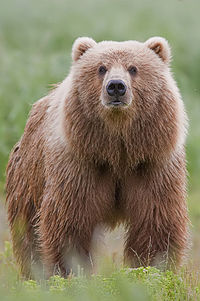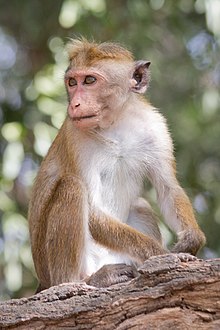10. Scorpion
All scorpions have a venomous sting, yet by far most of the species don't speak to a genuine risk to people and by and large solid grown-ups needn't bother with any therapeutic treatment in the wake of being stung.
Just around 25 species are known to have venom equipped for slaughtering a human. In a few sections of the world with profoundly venomous species human fatalities frequently happen, principally in territories with restricted access to therapeutic treatment.
9. Crocodile
Despite the fact that they seem comparative, crocodiles, gators and the gharial have a place with independent natural families. The gharial, with its tight nose, is simpler to recognize, while morphological contrasts are more hard to spot in crocodiles and gators. The most evident outside contrasts are obvious in the head, with crocodiles having smaller and longer heads, with a more V-molded than a U-formed nose contrasted with gators and caimans. Another conspicuous characteristic is that the upper and lower jaws of the crocodiles are a similar width, and the teeth in the lower jaw fall along the edge or outside the upper jaw when the mouth is shut; in this way, all teeth are obvious, not normal for a gator, which has in the upper jaw little sorrows into which the lower teeth fit.

Likewise, when the crocodile's mouth is shut, the huge fourth tooth in the lower jaw fits into a tightening in the upper jaw. For difficult to-recognize examples, the distending tooth is the most solid component to characterize the species' family. Crocodiles have all the more webbing on the toes of the rear feet and can all the more likely endure saltwater because of particular salt organs for sifting through salt, which are available, however non-working, in gators. Another attribute that isolates crocodiles from different crocodilians is their significantly more elevated amounts of animosity.
8. Lion
A standout amongst the most generally perceived creature images in human culture, the lion has been widely portrayed in models and artworks, on national banners, and in contemporary movies and writing. Lions have been kept in zoos since the season of the Roman Empire and have been a key animal groups looked for display in zoological gardens over the world since the late eighteenth century.
Social portrayals of lions were conspicuous in the Upper Paleolithic time frame; carvings and artistic creations from the Lascaux and Chauvet Caves in France have been dated to 17,000 years prior, and delineations have happened in essentially all antiquated and medieval societies that harmonized with the lion's previous and current extents.
7. Tiger
The tiger is among the most unmistakable and prominent of the world's magnetic megafauna.

It included conspicuously in antiquated folklore and fables and keeps on being delineated in present day movies and writing, showing up on numerous banners, crests and as mascots for donning groups. The tiger is the national creature of India, Bangladesh, Malaysia and South Korea.
6. Elephant
All elephants have a few unmistakable highlights, the most prominent of which is a long trunk (likewise called a proboscis), utilized for some reasons, especially breathing, lifting water, and getting a handle on items. Their incisors develop into tusks, which can fill in as weapons and as devices for moving articles and burrowing. Elephants' expansive ear folds help to control their body temperature. Their column like legs can convey their awesome weight. African elephants have bigger ears and inward backs while Asian elephants have littler ears and arched or level backs.
Elephants are herbivorous and can be found in various living spaces including savannahs, backwoods, deserts, and swamps. They like to remain close water. They are viewed as a cornerstone animal types because of their effect on their surroundings. Different creatures tend to stay away from elephants while predators, for example, lions, tigers, hyenas, and any wild pooches, more often than not target just youthful elephants (or "calves"). Elephants have a fission– combination society in which numerous family bunches meet up to mingle. Females ("dairy animals") have a tendency to live in family gatherings, which can comprise of one female with her calves or a few related females with posterity. The gatherings are driven by an individual known as the authority, regularly the most established cow.
5. Bear
While the polar bear is generally rapacious, and the goliath panda encourages as a rule on bamboo, the staying six species are omnivorous with differed eats less. Except for seeking people and moms with their young, bears are commonly single creatures. They might be diurnal or nighttime and have a phenomenal feeling of smell. In spite of their substantial form and ungainly step, they are capable sprinters, climbers, and swimmers. Bears utilize covers, for example, surrenders and logs, as their nooks; most species involve their lairs amid the winter for an extensive stretch of hibernation, up to 100 days.

Bears have been chased since ancient occasions for their meat and hide; they have been utilized for bear-bedeviling and different types of stimulation, for example, being made to move. With their intense physical nearness, they assume a conspicuous job in expressions of the human experience, folklore, and other social parts of different human social orders. In present day times, bears have gone under weight through infringement on their living spaces and illicit exchange bear parts, including the Asian bile bear showcase. The IUCN records six bear species as powerless or jeopardized, and even slightest concern species, for example, the darker bear, are in danger of extirpation in specific nations. The poaching and universal exchange of these most undermined populaces are denied, yet progressing.
4. Giraffe
The giraffe's head recognizing attributes are its to a great degree long neck and legs, its horn-like ossicones, and its unmistakable coat designs. It is grouped under the family Giraffidae, alongside its nearest surviving relative, the okapi. Its scattered range stretches out from Chad in the north to South Africa in the south, and from Niger in the west to Somalia in the east. Giraffes as a rule occupy savannahs and forests. Their sustenance source is leaves, foods grown from the ground of woody plants, essentially acacia species, which they peruse at statures most different herbivores can't reach. They might be gone after by lions, panthers, spotted hyenas and African wild pooches. Giraffes live in groups of related females and their posterity, or unhitched male crowds of inconsequential grown-up guys, yet are gregarious and may accumulate in extensive collections. Guys set up social progressions through "necking", which are battle sessions where the neck is utilized as a weapon. Prevailing guys gain mating access to females, which bear the sole obligation regarding raising the youthful.
The giraffe has charmed different societies, both old and present day, for its exceptional appearance, and has regularly been included in artistic creations, books, and kid's shows. It is grouped by the International Union for Conservation of Nature as Vulnerable to annihilation, and has been extirpated from numerous parts of its previous range. Giraffes are as yet found in various national stops and diversion holds yet estimations starting at 2016 demonstrate that there are around 97,500 individuals from Giraffa in nature. More than 1,600 were kept in zoos in 2010.
3. Monkey
Simians and tarsiers developed inside haplorrhines somewhere in the range of 60 million years back. New World monkeys and catarrhine monkeys rose inside the simians somewhere in the range of 35 million years prior. Old World monkeys and Hominoidea developed inside the catarrhine monkeys somewhere in the range of 25 million years back. Wiped out basal simians, for example, Aegyptopithecus or Parapithecus [35-32 million years ago], eosimiidea and some of the time even the Catarrhini aggregate are likewise viewed as monkeys by primatologists.

Lemurs, lorises, and galagos are not monkeys; rather they are strepsirrhine primates. Like monkeys, tarsiers are haplorhine primates; in any case, they are additionally not monkeys. Chimps developed inside the catarrhines with the Old World monkeys as a sister gathering, so cladistically they are monkeys too. Generally primates were not viewed as monkeys, rendering this gathering paraphyletic.
2. Bird
A few feathered creatures, particularly corvids and parrots, are among the most savvy creatures; a few winged animal types make and utilize apparatuses, and numerous social species pass on learning crosswise over ages, or, in other words type of culture. Numerous species every year move extraordinary separations. Winged animals are social, speaking with visual flags, calls, and fledgling melodies, and partaking in such social practices as helpful rearing and chasing, running, and mobbing of predators. Most by far of winged animal species are socially monogamous (alluding to social living course of action, particular from hereditary monogamy), typically for one rearing season at any given moment, once in a while for a considerable length of time, however seldom forever. Different species have rearing frameworks that are polygynous (course of action of one male with numerous females) or, once in a while, polyandrous (game plan of one female with numerous guys). Winged animals deliver posterity by laying eggs which are treated through sexual multiplication. They are typically laid in a home and brooded by the guardians. Most winged animals have an expanded time of parental consideration subsequent to bring forth. A few fowls, for example, hens, lay eggs notwithstanding when not prepared, however unfertilised eggs don't deliver posterity.
Numerous types of winged animals are financially vital as sustenance for human utilization and crude material in assembling, with tamed and undomesticated fowls (poultry and diversion) being imperative wellsprings of eggs, meat, and quills. Warblers, parrots, and different species are mainstream as pets. Guano (winged animal fecal matter) is collected for use as a compost. Flying creatures unmistakably figure all through human culture. Around 120– 130 species have turned out to be wiped out because of human action since the seventeenth century, and hundreds more before at that point. Human action debilitates around 1,200 flying creature species with eradication, however endeavors are in progress to ensure them. Recreational birdwatching is an imperative piece of the ecotourism business.
1. Snake
Living snakes are found on each mainland aside from Antarctica, and on most littler land masses; exemptions incorporate some extensive islands, for example, Ireland, Iceland, Greenland, the Hawaiian archipelago, and the islands of New Zealand, and numerous little islands of the Atlantic and focal Pacific oceans. Additionally, ocean snakes are across the board all through the Indian and Pacific Oceans. In excess of 20 families are as of now perceived, containing around 520 genera and around 3,600 species. They extend in size from the little, 10.4 cm (4.1 in)- long string snake to the reticulated python of 6.95 meters (22.8 ft) in length. The fossil species Titanoboa cerrejonensis was 12.8 meters (42 ft) long. Snakes are thought to have developed from either tunneling or oceanic reptiles, maybe amid the Jurassic time frame, with the soonest known fossils dating to somewhere in the range of 143 and 167 Ma ago. The assorted variety of present day snakes showed up amid the Paleocene time frame (c 66 to 56 Ma prior). The most seasoned protected portrayals of snakes can be found in the Brooklyn Papyrus.
Most species are nonvenomous and those that have venom utilize it essentially to murder and quell prey instead of for self-preservation. Some have venom sufficiently intense to make excruciating damage or passing people. Nonvenomous snakes either swallow prey alive or execute by narrowing.
Comments
Post a Comment